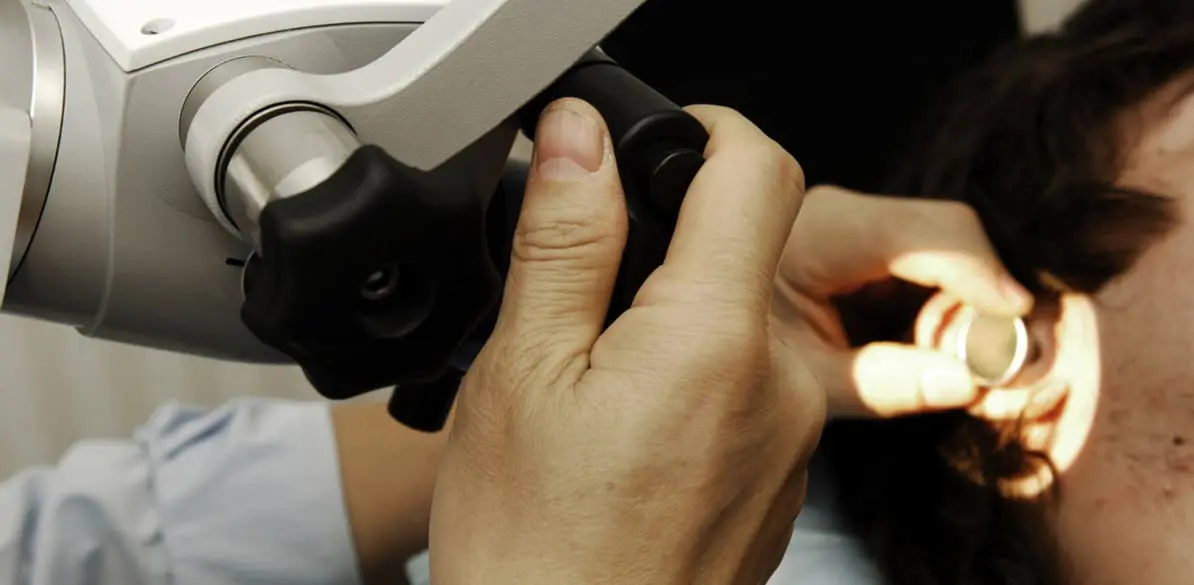Peripheral and central vestibular syndromes, and their interference with driving. Ototoxic substances

Peripheral vestibular syndrome
It consists of damage to the cochlea or internal auditory nerve.
The most frequent cause is acoustic neurinoma, and other causes include vascular disorders, viral infections, meningitis sequelae, cholesteatoma and other tumors.
It presents with vestibular signs of labyrinthine vertigo and horizontal rotary nystagmus, progressive unilateral perception hypoacusis and few signs of lesion of the facial nerve.
Tips
- The patient cannot drive.
- After treatment is completed, the patient should be evaluated for possible sequelae and informed of any possible sequelae from his/her disease and their effect on driving.
Central vestibular syndrome
It consists of a lesion of the vestibular pathways in the region of the higher centers.
It is caused by compression by a tumor or abscess, vascular disorders such as vertebrobasilar insufficiency syndrome or diffuse atherosclerosis of the posterior fossa, degenerative or inflammatory syndromes such plaque sclerosis, syringobulbia and others.
In the hypoexcitability syndrome, vertigos are less pronounced than in the peripheral syndrome, but disequilibrium is marked. Spontaneous nystagmus is continuous and very severe.
In the hyperexcitability syndrome, vertigo is also minimal and there is marked disequilibrium. Spontaneous nystagmus is generally absent.
Tips
- No driving is permitted.
- If the causative disease is controlled, the possibility of permitting driving or renewal of the driver’s license will be evaluated on a case-by-case basis, with regular reports from the specialist.
Substances and medications that may cause ototoxicity
- Antibiotics: amikacin, amphotericin B, ampicillin, azithromycin, capreomycin, cephalexin, clarithromycin, clindamycin, chloramphenicol, colistin, cotrimoxazole, dihidrostreptomycin, doxycycline, erythromycin, framicetin, furazolidone, gentamycin, kanamycin, metronidazole, minocycline, neomycin, netilmicin, paromomycin, polymixin B, rifampicin, ristocetin, vancomycin, viomycin, teicoplamine and teracyclines.
- Anti-inflammatory drugs: Mefenamic acid, etodolactol, phenylbutazone, fenoprofen, ibuprofen, indomethacin, naproxen, piroxicam and priquazone.
- Beta-blockers: practolol and propanolol.
- Tricyclic antidepressants: imipramine, nortriptyline.
- Loop diuretics: ethacrynic acid, bumetanide, furosemide, piretanide and torasemide.
- Contraceptives: medroxyprogesterone.
- Alcohol and nicotine.
- Antineoplastics: actinomycin, bleomycin, carboplatin, cyclophosphamide, cisplatin, dactinomycin, ifosfamide, misonidazole, methotrexate, misonidazole, nitrogenated mustard, vimblastin and vincristine.
- Antimalarials: cloroquine, quinine.
- Disinfectants: benzalkonium chloride, Chlorhexidine and iodinated compounds.
- Other topical ear medications: Bonain’s Solution (cocaine, phenol and thymol), Gelatin Formaldehyde (absorbable gelatin sponge).
Tips
- Physicians should adhere to the recommended dose and treatment duration and not exceed them when using medications that can damage the ear and inform the patient of this risk.
- It is recommendable to substitute the active ingredient for another nontoxic medication with a similar therapeutic effect.
- If we institute treatment with potentially ototoxic medications, we should not exceed the recommended dose or treatment duration for each drug.
General advice to the physician on management of a patient with hypoacusis
- Hypoacusis is an accompanying symptom of numerous diseases and its characteristics vary depending on the cause that originated it.
- Physicians should be especially vigilant of persons with a genetic history of hypoacusis and those with professional risks, general diseases that may affect the ear, medicines, aging, recurrent vertigo, etc.
- In patients with suspected hypoacusis, we should diagnosis the type and cause of hypoacusis as soon as possible, and institute appropriate treatment, either medical or surgical or with hearing aids. This will ensure that auditory sequelae are minimal and reduce the risks during driving.
- Drivers with hearing aids should wear them when they drive and carry spare batteries with them. They should go to all checkups by their specialist and ensure proper maintenance of the hearing aid.
- After surgical treatment of the ear, the patient should be cautioned that he/she cannot drive until hearing ability is completely recovered according the law, and provided always that vertigo, instability or nystagmus are absent.
